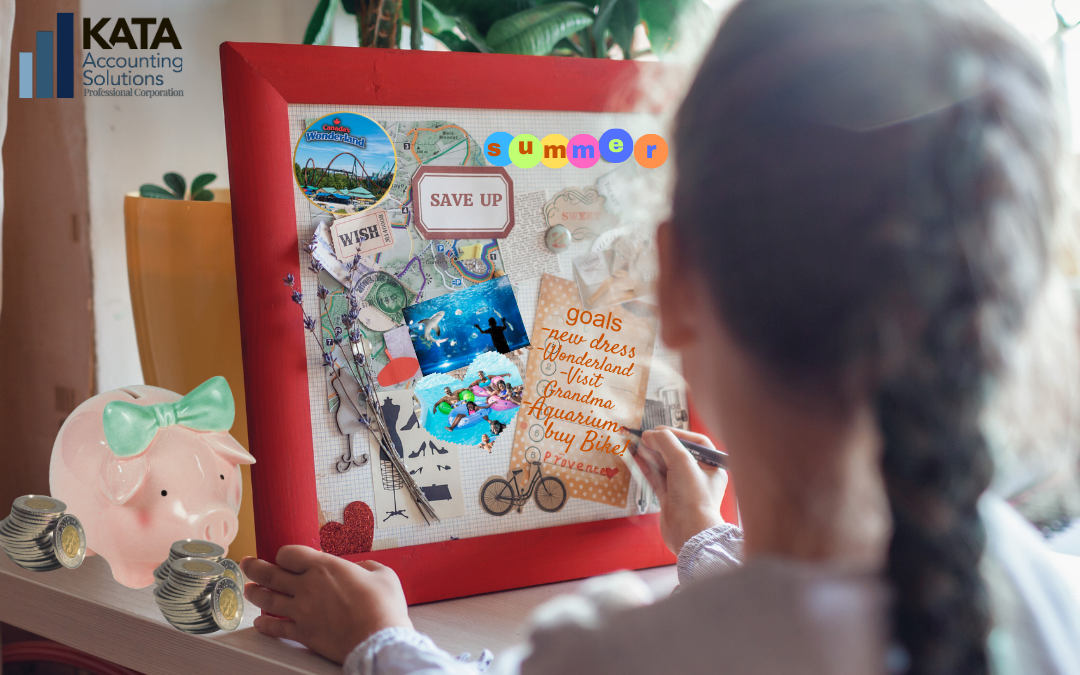Financial Education Starts at Home
In our last article, I wrote about some of the early things I discovered about building positive relationships between my son and money.
To summarize, those were:
- Mindset matters – Adjusting our mindset so that the examples we show create positive emotions surrounding money, not negative ones;
- Set positive examples by being:
- Open and discussing money in front of our son
- Being goal-oriented
- Discussing value and helping our son understand value
- Helping our son embrace deferred gratification
- Demonstrating gratitude every day.
I hope you found that one helpful.
In my research and discussions, I spoke with several parents who had much to say about how they taught their children – and how their children’s behaviour has helped them coach their children into better decision-making.
At this point in my son’s life, it’s far too early to start speaking about these ideas, but they will definitely influence my thinking about his future financial education.
Value and Values
Several parents I spoke with mentioned these ideas. Value of the dollar, value of time, value of the purchase – and does it align with the child’s and the family’s values. I found it fascinating, but perhaps not surprising, that some parents were teaching their children about value from their very first allowance.
Value
Learning from more experienced parents, many mentioned value in different contexts.
In one particular instance where the family had multiple children, they all started at the same base allowance and then could add on chores that would help them earn more allowance. I found this fascinating because it essentially institutes incentive-based compensation for children.
Some also used awards for grades or penalties for things like bad behaviour or forgetting to do chores.
Avoiding Impulse Purchases
One story I heard involved a child wanting to buy a drink at a convenience store. The father helped the child understand that she was paying a large amount for the convenience of being able to have the drink immediately, whereas if she was to wait, she could buy it at a much lower price when they visited Costco, but she would have to spend more.
It was an interesting lesson and one that stuck with me. Over time, I’ve encountered a lot of adults who haven’t learned this lesson, and end up spending far more than they have to due to lack of planning. I bet their parents never had a conversation like this with them…
Values
Another interesting thing that came up was values. Specifically, restricting what the child could and could not buy with their allowance, or at least encouraging specific behaviours in spending.
For instance, guns as toys are quite a controversial subject. Anyone who has known a young boy knows that eventually, they will get their hands on a water gun or something. There’s just too much influence from too many sources outside the home that drive these desired purchases.
When I was young, I was not allowed to buy or have any toys that had guns. This pretty much fell apart when I’d build them while playing with Lego.
This idea has some interesting impacts on educating children about our spending habits demonstrating our values.
Delayed Gratification
The story about the father, daughter, and the convenience store drink painted a great picture of deferring gratification and setting goals.
One of my favourite thirst-quenchers is Gatorade’s G2. If I go to the closest shop, a Shell Gas Station, I’ll pay $2.99 for one (if it isn’t on sale). However, if I delay gratification until I go to Costco, I have to buy 28, but I get them for $22.99. That’s $0.82 each, almost a quarter the price of the gas station! If I were to buy 28 G2s at the gas station, I’d end up paying $83.72 or $60.73 more than if I buy them at Costco. It’s astounding how far planning ahead goes.
Goal Setting
This was another tool that many parents I spoke to mentioned. The hard part is, as a parent, not giving in to whining, complaining, or temper tantrums.
Helping your children prioritize what they want to spend their money on and helping them create plans to save for goals is a great way to help build SMART goal-setting early.
One story I heard involved a mother and son annually deciding on their savings goals together and creating vision boards and a system of “jars” in which to save for their goals. Then, they’d review the vision boards every month and keep focused on what they really wanted.
Sometimes, things would change and the child would not want something that they had at the beginning of the year, but usually, the goals were achieved.
What are your Stories?
As I educate myself and share these stories, I’m relying on what other parents tell me – anecdotal, not empirical evidence. Do you have any stories to share? What worked well for you? What would you have done differently?
At this point, I’m just looking to learn…
